
Review on 💻 One Netbook One Mix A1 Engineer PC Micro PC- 7" Touchscreen Laptop Notebook UMPC Tablet PC Windows 10 System Pocket Micro PC Computer Intel Core M3-8100Y 8GB RAM (512GB Storage) by Kirt Phillips

A1 as a Linux tablet
I bought the A1 to replace the GPD MicroPC I used for casual browsing, news, feeds and podcasts. The MicroPC is still one of my favorite PDAs, but the screen size and quality were starting to bother me, and the A1 seemed like a good alternative. I had several GPD devices. This is my first One Netbook device. I wanted to use the A1 the same way I used the MicroPC: portable, in a laptop configuration, with a keyboard and a thumb mouse IR sensor. That works well enough. The quality and layout of the A1's keyboard is pretty good. The screen quality is really good. The aluminum chassis is suave. The IR mouse is terrible, but you can't beat everyone. All in all, the A1 looks and feels like a premium device. I think it's a good upgrade from the MicroPC at a fair price, $770 for the 512GB model at the time of this review. Most hardware works out of the box in Linux, and the rest is covered in the manual (search for: Gentoo on an A1 netbook). It was easy to set up with Arch. The only thing that doesn't work at all is the fingerprint sensor. The manual says the A1 has an axis sensor, which got me thinking about the tablet configuration, if only because it looks really smooth in that mode. It's been years since I've looked at a touch UI on a Linux PC, so I decided to see how the Arch could work as a tablet. The A1 with GNOME on Wayland was unexpectedly one of the best tablets I've had - an experience I wanted and didn't get from PinePhone, but without the phone part. The A1 in tablet mode feels comfortable in any orientation, has a beautiful screen, excellent touch response, stays cool even during heavy browsing, and offers excellent performance even with low power consumption. The screen is spacious and wonderful compared to smartphones. Landscape and portrait are equally suitable for most tasks. Historically I wasn't a fan of GNOME or touch UIs, but GNOME has worked very well as a touch UI. It took a lot of tweaking to get it right, but the end result was less work than I expected and the results were way better than I expected. The GNOME onscreen keyboard is the best I've seen on a Linux PC as it really snaps in and out automatically and reliably when it's supposed to. However, there is no predictive text if you are interested in such things. (I'd try plasma, but it's having way too many problems with Wayland at the moment.) My A1 runs at 8W by default, but runs fine at 4W with a conservative under-voltage of -80mV - fairly standard for the 8100Y. As for the criticism, I can't say much bad about the A1. I've only had it a few days, but it's already exceeded my expectations on several occasions, thanks in part to GNOME and Wayland and the m3-8100Y being a great platform for things like this. However, there is always room for improvement. In my opinion, the A1 is less comfortable as a pocket computer in a laptop configuration than the MicroPC. Nothing beats a touchpad mouse, and the A1's IR sensor doesn't even try. There's a good chance I'll switch back to MicroPC for convenience if tablet mode doesn't work so well on the A1. The location of the USB-C port limits how you hold the A1 while charging. The position works well in tablet mode, but it's awkward to hold in hands while charging in laptop mode. The cooling system is (obviously) insufficient for sustained high loads at the default power limit. When compiling the kernel on 8w/15w, the video was sporadic even though the compilation was complete. The screen rotation mechanism does not inspire confidence because. he wobbles and wobbles. I treat mine kindly. The rest works fine. The aluminum housing is very stylish, but conducts heat better than plastic. The 8100y can get very hot. In practice, this is only a problem if you load the processor on a PDA more than you should. The keyboard is odd as the keys are a bit large for thumbs (long travel time) but too small for touch typing. But it's a decent keyboard.
- Easy setup
- There are other interesting options.
New products
Comments (0)
Top products in 💻 Laptops
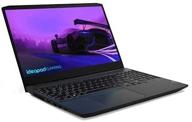
Lenovo IdeaPad Gaming 3: 15.6 Inch AMD Ryzen Gaming Laptop with RTX 3060 6GB GDDR6

118 Review
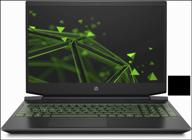
HP Pavilion Gaming 15-ec2048ur 15.6" Laptop 1920x1080, AMD Ryzen 5 5600H 3.3GHz, 8GB RAM, 512GB SSD, NVIDIA GeForce RTX 3050, DOS, 4E0T5EA, Dark Grey/Bright Green Chrome Logo

77 Review
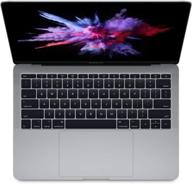
Apple MacBook 13 Inch 2 3GHz 256GB

92 Review
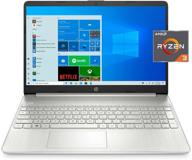
HP 15 Ef1300Wm 3 3250 Silver Windows

100 Review
Another interesting products

Refurbished 2019 Apple iMac with Retina 4K/3.6 GHz Intel Core i3 🖥️ Quad-Core (21.5-Inch, 8GB RAM, 1TB) - Silver: Ultimate Deal on a Powerful Renewed Desktop!

13 Review

HP Pavilion Gaming Desktop Computer, Ryzen 5 3500 Processor, NVIDIA GTX 1650 4 GB, 8 GB RAM, 512 GB SSD, Windows 10 Home (TG01-0030, Black)

11 Review
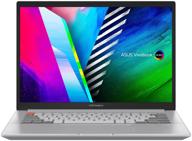
14" ASUS Vivobook Pro 14X OLED N7400PC-KM059 2880x1800, Intel Core i5 11300H 3.1GHz, RAM 16GB, DDR4, SSD 512GB, NVIDIA GeForce RTX 3050, no OS, 90NB0U44-M01450, silver

26 Review
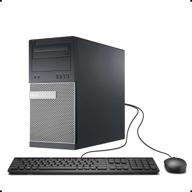
🖥️ Dell Optiplex 990 Tower Business Desktop Computer: Intel Quad Core i5, 8GB RAM, 500GB HDD, Windows 10 Pro (Renewed)

12 Review

